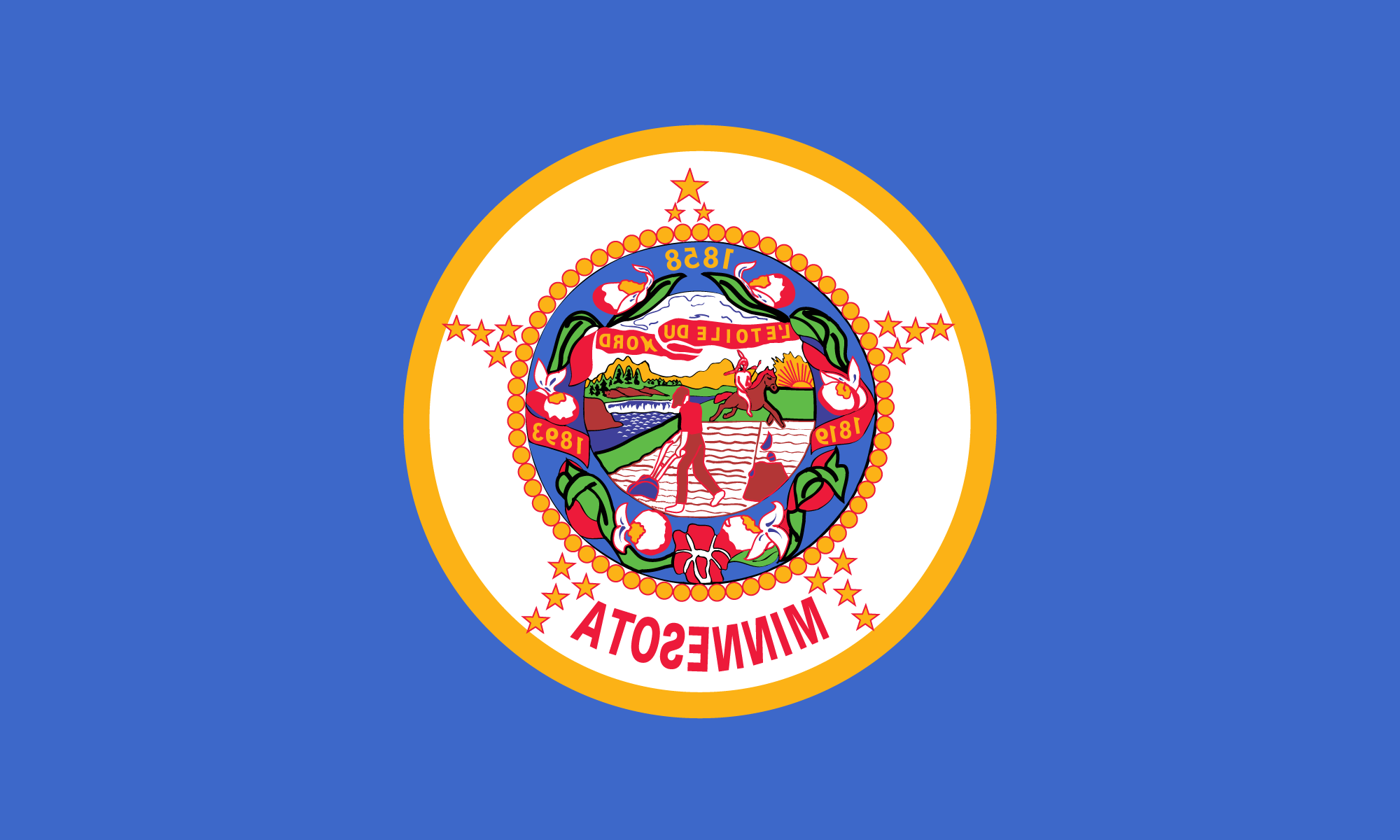1) DO OTHER STATES HAVE GOOD FLAGS?
YES! Alaska, the big dipper; Arizona, a western sunset; California, a bear-flag; Colorado, a red “C”; Maryland, the arms of Lord Baltimore; New Mexico, an indigenous sun-symbol; South Carolina, a Palmetto tree; Texas, a lone-star banner.
2) DO OTHER STATES HAVE POOR FLAGS?
LOTS! They are often crowded with seals, hard to remember or see, and are easily confused with each other — especially the twenty that are blue with seals in the center! Some states have even scrawled their names across their flags to make them stand out. The result is a confession of failure: “without a name, no one would recognize this flag.” Worse yet, words appear backwards on the reverse side of the flag: SASNAK, ANATNOM, NISNOCSIW, ATOSENNIM. Hopefully, we can do better.
3) IS IT RIGHT TO CHANGE A FLAG?
Yes. Flags are not untouchable if there are good reasons to change them. Canada, for example, changed its flag from a British model to a distinctive maple-leaf design in 1965. It now has one of the most celebrated flags in the world. In the United States, Georgia changed its flag in 2001, abandoning the Confederate battle flag for the sake of unity. A similar initiative has been underway in Mississippi. In the past three decades, several states have explored possible new flags, for many of the same reasons as Minnesota — including Maine, Montana, Nebraska, South Dakota, and Utah.
4) WILL A CHANGE OF FLAGS BREACH TRADITION?
Hardly. A true tradition lives on in people’s hearts and minds; but most people don’t even know what our flag looks like — much less means! People are not ignorant: the flag itself is dated, and its design impractical. Its tradition has faded, despite a century of use (since 1893) and two makeovers (1957, 1983). A better one will develop a lasting tradition!
5) CAN THE OLD FLAG BE PRESERVED SOMEHOW?
Of course! It could be retained in a replica of its 1893 form, and called a “State Banner.” Like an heirloom, this replica could be employed alongside the new State Flag for special ceremonial purposes (e.g., at inaugurations and other solemn occasions). There is precedent elsewhere: several other states have special ceremonial flags for their governors, state militias, etc.
6) WILL WE LOSE OUR STATE SEAL?
Not necessarily. The seal could remain unchanged and will continue to appear on all official documents, medallions, etc. Actually, that’s what they are for: complex seals are made to be viewed close-up on flat, motionless surfaces — not from afar, flying in the wind!
7) WHAT WOULD A CHANGE COST?
Nothing. A new and simpler flag could actually cost less. And the new design could be “grandfathered in” as stocks of the old flag are used up.
8) ARE FLAGS THAT IMPORTANT?
Yes. Cities and businesses spend large sums of money for effective “corporate branding” through logos and symbols. Likewise, flags are powerful symbols that can be used to foster local identity and pride, and promote Minnesota in a global marketplace. States with good flags display them on everything from road signs and license plates to uniforms, private homes and businesses. Why should Minnesota be different? Even if the legislature hesitates to take time for the flag, it can delegate the matter to a blue-ribbon commission or even sponsor a contest.
9) ARE THERE EXPERTS TO CONSULT?
Yes. The North American Vexillological Association (NAVA), an international network of flag experts, assists with flag design processes.
